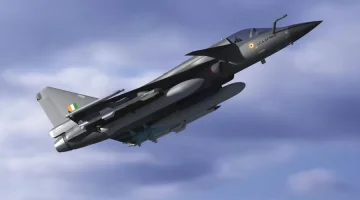- Views: 2K
- Replies: 13
The Indian Air Force (IAF) is enhancing the combat capabilities of its primary fighter jets, the MiG-29UPG and Su-30MKI, by equipping them with the latest Russian-made RVV-SD beyond-visual-range (BVR) air-to-air missiles.
This development marks a significant upgrade to their aerial engagement power, replacing the older R-77 (also known as RVV-AE) missiles, which are now considered less advanced.
The RVV-SD, referred to by its Russian product code "Product 170-1," is manufactured by the Vympel State Engineering Design Bureau, part of Russia's Tactical Missiles Corporation (KTRV).
The new-generation RVV-SD missile incorporates sophisticated multichannel homing systems and leverages the latest advancements in digital technology, modern materials, and high-performance components. These features allow it to surpass previous missile models in several key areas.
Notable improvements include a greater operational range, enhanced precision in targeting, a higher probability of successfully acquiring targets, increased resistance to electronic jamming, and the capability to function effectively in all weather conditions, day or night.
Guidance for the RVV-SD is achieved through a combined system. This includes inertial navigation for the initial flight phase, mid-course updates via radio correction signals, and active radar homing for the final approach to the target.
A crucial element of its advanced guidance is the 9B-1103M active radar seeker, developed by the Moscow Research Institute ‘Agat’. This modern monopulse Doppler radar seeker boasts considerably increased transmitter power and receiver sensitivity, along with updated software and superior defences against both artificial electronic interference and natural environmental disturbances.
These technological enhancements give the RVV-SD a significant performance edge. It can engage aerial targets up to 110 kilometres away when launched in the forward direction, a substantial increase from the 80-kilometre range of the older R-77 missile.
Furthermore, the RVV-SD is designed to intercept and destroy highly agile targets attempting evasive manoeuvres, even those experiencing gravitational forces up to 12g (12 times the force of gravity). This addresses a critical performance gap found in some older BVR missile systems.
The introduction of the RVV-SD missiles into the IAF's arsenal has been expedited through emergency procurement procedures. This decision underscores the urgent operational needs of the air force, particularly in light of ongoing regional tensions and the necessity for a strong deterrent capability.
While the RVV-SD is set to be a key BVR weapon for the IAF's Russian-origin aircraft fleet, it is generally viewed as an interim enhancement. India is actively pursuing self-reliance in missile technology with its indigenous Astra missile program, led by the Defence Research and Development Organisation (DRDO).
The Astra Mk-I missile has already been inducted into service, and the more advanced Astra Mk-II is currently under development. These Indian-made missiles are slated to eventually replace the R-77 series and other imported systems on all compatible fighter aircraft, bolstering the nation's indigenous defence manufacturing capabilities and providing the IAF with cutting-edge air combat solutions developed domestically.

